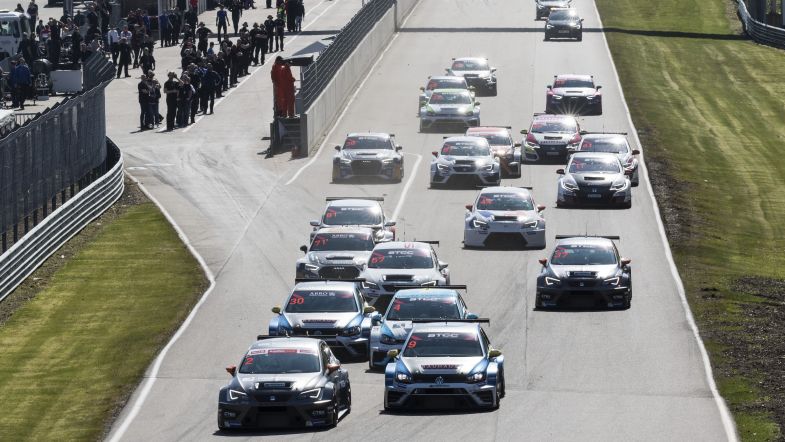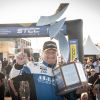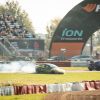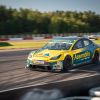STCC reverts to two-race weekends for 2018, reversed grids return
The Scandinavian Touring Car Championship will reduce the number of races held per weekend from three to two next season as part of a raft of sporting regulation changes, the series’ chairman Hans Bååth has revealed.
Bååth, who took over control of the STCC from Jonas Lundin in September, also announced the return of reversed grids in 2018, in an attempt to improve the spectacle for fans.
In a statement, Bååth said: “Two races instead of three provide more space for the public, media and partners to get in touch with team and drivers during the race, which is an important part of the racing experience.
“We will be significantly better at taking audience and television viewers closer to the centre of events. With the grid reversed in Race 2, the crowd will also get more action on the track and significantly more teams and drivers will fight for the podium.”
The most significant changes for the 2018 season concentrate on the qualifying format, with two sessions instead of three used to determine the grids for both races.
All drivers will take part in Q1, which will set the grid for the opening race. The fastest 12 will then progress to Q2, where the top ten times will be reversed to set the starting positions for Race 2.
Points will be awarded to the fastest five drivers in each session in a 5,4,3,2,1 format. The points awarded for the races remain unchanged from 2017, with 25 for a win.
Reversed grids were last used in the STCC in 2016 and had been a contentious inclusion among drivers and teams, who occasionally adapted their qualifying strategy to set themselves up better for the races. Although targeting a favourable reversed grid position was then discouraged by awarding a race win’s worth of 25 points for the fastest time in the reversed grid qualifying segment.
STCC sporting director Thomas Johansson said: “I am convinced that the changes we make will create a more even and more interesting championship with more drivers.
“There will be controversy about the grid before race one but also with tenth place in Q2 which gives pole position in race two. The difference between qualifying 11th or 10th is therefore enormous. A tenth place gives great chances of getting to the podium, and an 11th place means starting in the mid-field, where there was some trouble during the 2017 season and will be even tougher in 2018.”
PWR Racing and Kristoffersson Motorsport (KMS) dominated the 2017 season, taking all 21 victories between them. The new rules are aimed at making races more unpredictable, with the fastest having to make their way through the field each weekend.
In addition to the format changes, teams will also be restricted to the amount of tyres they will be able to use over the course of a race weekend. Organisers have reduced the allocation of tyres per weekend per car by two sets for the new season.










